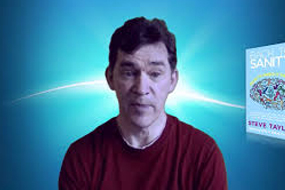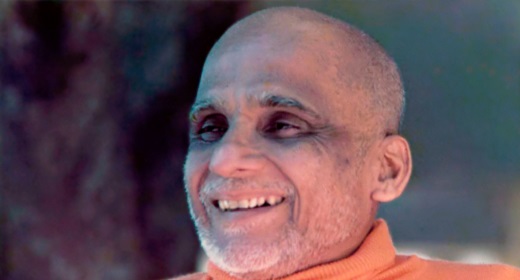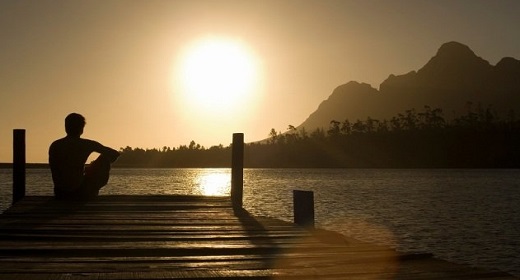Steve Taylor PhD: is an author and teacher, whose main interests are psychology and spirituality. His articles and essays have been published in over 30 academic journals, magazines and newspapers,
 including The Journal of Transpersonal Psychology, The Journal of Consciousness Studies, The Transpersonal Psychology Review, The International Journal of Transpersonal Studies, The Scientific and Medical Network Review, Anti-matters, Soul and Spirit, Paradigm Shift, Green Spirit, Odyssey (South Africa) Resurgence and The Daily Express. His work has been featured widely in the media in the UK, including on BBC Breakfast, BBC World TV, Five Live and in The Guardian.
including The Journal of Transpersonal Psychology, The Journal of Consciousness Studies, The Transpersonal Psychology Review, The International Journal of Transpersonal Studies, The Scientific and Medical Network Review, Anti-matters, Soul and Spirit, Paradigm Shift, Green Spirit, Odyssey (South Africa) Resurgence and The Daily Express. His work has been featured widely in the media in the UK, including on BBC Breakfast, BBC World TV, Five Live and in The Guardian.
by Steve Taylor: Higher states of consciousness – or awakening experiences, as I prefer to call them – are moments of revelation, when we perceive reality at a heightened intensity. The world around us comes to life, and is filled with an atmosphere of harmony and meaning. A spirit-force seems to pervade all things, and the spaces between them, bringing everything into oneness. We experience ourselves as part of this oneness too, and feel ecstatic or serene. At the highest intensity of awakening, we might feel that we’ve become one with the universe, and attain a state of complete fullness and perfection. The whole material world may dissolve away, into an ocean of spiritual radiance.
These experiences are sometimes associated with meditation, nature or psychedelic drugs, but what exactly is it that causes them? Why is it that the limits of our normal consciousness sometimes fall away, giving us access to a world of is-ness, beauty and meaning which is normally hidden from us?
Neuroscientists generally believe that HSCs are caused by changes in brain activity. According to Michael Persinger and V.S. Ramachandran, for instance, spiritual experiences are the result of stimulation of the temporal lobes of the brain. Persinger has even claimed to induce mystical experiences with a ‘helmet’ – now called the ‘Shakti helmet,’ and available to buy – which stimulates a person’s frontal lobes with magnetic fields. However, just because HSCs or awakening experiences appear to be associated with certain brain states, it doesn’t necessarily mean that the brain states produce the experiences. It could be the other way round – increased electrical activity in the frontal lobes, or less activity in the posterior superior parietal lobe, could just as easily be the results of higher states of consciousness rather than causes of them. These scientists may only be looking at the ‘footprints’ of the experiences, rather than the cause of them.
My view is that there are two basic types of awakening experiences, which have two distinct causes. The first type are wild, ecstatic experiences that happen when the normal homeostasis of our brain and bodies is disrupted. This is a ‘loophole’ which human beings have made use of throughout history. This is why there has always been a link between fasting and spirituality, for example. A prolonged lack of food appears to make the hold which ordinary consciousness has over us looser, and bring us closer to an awakened vision of the world. Fasting puts us ‘out of homeostasis’ by causing physiological changes, such as a lower level of blood glucose, higher levels of insulin and a lower body temperature.
Indigenous peoples often fast and deprive themselves of sleep as a preparation for rituals, dance and vision quests, using physical deprivation as a way of ‘purifying’ themselves. The Vision Quest was a spiritual exercise used by some Native American peoples as a way of building up spiritual power and communicating with spirits. The person would go to a solitary spot – often the top of a mountain – and stay there for up to four days, fasting and exposing themselves to the elements (usually wearing almost no clothes, even if the weather was cold). He or she would try to attain a state of complete attentiveness to their surroundings, since sacred powers might try to communicate with them at any moment. As a result, they might experience a higher state of consciousness (that is, higher than their normal low level higher state), with strong feelings of peace and a sense of connection to the natural world, and also be given special knowledge – such as a message or a new song or dance – from spirits.
In ancient Greece and – at a later time – throughout the Middle East and the Roman Empire, a large number of esoteric cults existed outside conventional religions. These ‘mystery cults’ were usually centred around particular gods, but rather than just worshipping them, the participants aimed to become one with the gods, or to be possessed by them. They fasted and went without sleep before ceremonies, and used a variety of other methods of disrupting homeostasis during them: they would take drugs, beat themselves, and dance frenziedly, so that they might be – in the words of the ancient philosopher Proclus, who observed the mysteries at first hand – ‘filled with divine awe…assimilate themselves to the holy symbols, leave their own identity, become at home with the gods, and experience divine possession.’
Like fasting, sleep deprivation is a very uncomfortable experience and doesn’t have any psychological effects apart from making us more anxious and irritable. However, sleep deprivation also puts out of homeostasis. It causes physiological changes such as higher blood pressure, a depressed immune system and hormonal and metabolic changes. As a result, it can occasionally give rise to a higher state of consciousness. This was why the mystery initiates and native peoples went without sleep before ceremonies and rituals.
Pain is usually desperately unpleasant too, of course, but it can also be used as a way of inducing awakening experiences. We can see this in the long tradition of asceticism, for instance, which runs through all of the world’s religions and spiritual traditions. An ascetic is someone who deliberately denies his body’s needs, and inflicts pain and discomfort on himself, either through fasting, abstaining from sensual pleasures and comforts, or by physically beating or injuring himself. This sounds like sadism, and for some ascetics it probably was. It’s also likely that some ascetics were motivated by morbid self-hatred and neurotic feelings of guilt towards sex and other bodily processes, which made them want to punish themselves.
It goes without saying that inflicting pain on yourself, or forcing yourself to go without sleep or food, are hardly ideal ways of transcending ordinary consciousness. Although some ascetics apparently managed to continue torturing themselves for years and even decades, there’s obviously a very high risk of seriously injuring yourself, or dying of self-neglect. Aside from the famous ascetics like St Simeon Stylites and Henry de Suso, there were probably many others who followed similar practices but didn’t live long enough to gain any recognition. As a short term spiritual technology asceticism is fairly futile anyway; you might gain a brief glimpse of a higher reality but this only lasts as long as the chemical changes that the pain and suffering have produced inside you. Your body always returns to homeostasis, and you always have to return your constricted normal consciousness.
There must be easier ways of ‘disrupting the equilibrium’ than fasting, sleep deprivation or pain – and there are. If we know that all an ascetic is really doing by torturing himself is changing his normal chemistry, then surely, you might say, it’d be more sensible to just interfere with this chemistry directly – by taking drugs, for example, which would give us the same effect but wouldn’t involve any self-harm.
Human beings have always used drugs as a means of intensifying or altering consciousness. The ancient peoples of Europe apparently smoked opium and cannabis 6,000 years ago; 2,000 years later the early Indo-European conquerors of India worshipped their drink Soma, which most scholars believe was made from magic mushrooms; while the initiates of the Greek Eleusinian mysteries used a psychoactive drink called kykeon. Indigenous peoples often use drugs too: Native Americans ingested sacred plants such as fly-agaric mushrooms and peyote, while the Australian Aborigines have a powerful form of tobacco called pituri. By far the most powerful in terms of their transcendental effects are psychedelic drugs, such as mescaline, LSD or magic mushrooms. In the right circumstances – and the right state of mind – these drugs can, it seems, take our minds out of the ‘mould’ of ordinary consciousness, and give us access to wider and more intense realities.
The second type of awakening experiences are more serene and calm states which occur when our life-energy (or vitality) becomes more intensified. Normally there’s a continual outflow of our life-energy – it’s used up through mental activity (such as cognition, concentration and perception) and through our emotions and instincts. But sometimes, when we’re relaxed, fairly inactive and our minds are quiet, this outflow or energy decreases. Life-energy becomes concentrated inside us, which generates an awakening experience.
This is why meditation often generates spiritual experiences. When we sit down to meditate, we take ourselves off the treadmill of daily tasks and activities for a while, and sit quietly and close our eyes, so that we don’t use up much life-energy through concentration and perception. Our ‘thought-chatter’ slows down too, and we normally become free of emotional activity and sexual desire. As a result, after meditation there is an inner concentration of our life-energy, it’s concentrated and intensified rather than dispersed and dissipated.
We can see meditation is a conscious attempt to build up an intensification of life-energy and so generate awakening experiences, but there are many situations when this happens spontaneously. This is the reason why nature is such a powerful trigger for awakening experiences, for example. The beauty of nature may have a similar effect to a mantra in meditation, directing attention away from the chattering of the ego-mind. Cognitive activity may fade away, until life-energy intensifies, bringing a sense of inner peace and wholeness and heightened awareness of the phenomenal world. Here, for example, a student of mine describes an awakening experience she had swimming in a friend’s lake in Canada:
I felt as though I was the only person there, the only person in the world. I swam out as far as I could, to the middle of the lake and just looked around, treading water. I could see no houses, no people, no cars or roads. I could hear no noise, just my arms splashing. I felt completely alone, but part of everything, I felt at peace. All my troubles disappeared and I felt in harmony with nature. It only lasted a few minutes but I remember the sense of calmness and stillness and it soothes me now.
It’s significant that this experience happened while the person was swimming, since sports can be a trigger of awakening experiences too. This is particularly true of sports which involve long periods of monotonous rhythmic activity, such as long distance running or swimming. The activity itself serves as a focusing device, and quietens the chattering ego-mind. Similarly, the poet Ted Hughes often experienced a meditative state while fishing. He notes how poetry depends upon the ability to focus the mind intensely, and believes that he acquired this ability through fishing. He describes the effect of staring at a float for long periods: “All the nagging impulses that are normally distracting your mind dissolve…once they have dissolved, you enter one of the orders of bliss. Your whole being rests lightly on your float, but not drowsily, very alert.”
This may also be part of the reason for connection between sex and spiritual states. The sheer pleasure of sex can shift our attention away from the ego-mind, which may fall silent as a result, bringing what D.H. Lawrence described as “the strange, soothing flood of peace which goes with true sex.” At the same time, sex may release new energy inside us, energy which is normally dormant but can arise and shoot through us like electricity. (There is a similarity here the volatile kundalini energy with, according to Hindu Tantric tradition, is coiled at the bottom of the spine.) Here, for example, an acquaintance of mine describes how she feels after she has orgasms:
I feel as if I haven’t got any weight. There’s a warm feeling running all through my body…Nothing else seems to matter, problems cease to exist, as if the feeling takes you over so much that there’s no room for anything else. I look at things more clearly, look beyond what I usually look at. The colours seem more distinct; if you look at, say, a tree, you see it for what it really is, not just as a tree. You see it as nature, not just as an object.
As sources of awakening experiences, both homeostasis disruption (HD) and an intensification of life-energy are equally valid, but there are some reasons why the latter are preferable. ILE (intensification of life-energy) states don’t have the same physical and psychological risks as HD states. Drug experiences (and other HD states) produce a powerful blast which immobilises the ego, and if this blast is regularly repeated the ego structure may dissolve, and never be able to re-form itself. These are the effects suffered by the so-called ‘acid casualties’ of the 1960s, such as the musicians Syd Barrett, Peter Green and Brian Wilson.
In a sense, HD experiences are only really a shortcut too. It’s as if we’ve just stumbled on a defect in the mechanisms of consciousness, a kind of legal clause which gives us a quick and easy way of escaping ordinary consciousness, and are exploiting it. You could compare it to schoolchildren tricking their teacher into leaving the room so they can enjoy a few minutes of freedom while she’s away – but the teacher always comes back again, of course, and then everything goes back to normal. On the other hand, ILE states can bring about permanent change in a positive way. They can change the structure of the psyche without damaging it, and gradually create a new state of being, so that wakefulness becomes not just a temporary experience, but a permanent state.
This isn’t to demean the importance of higher states of consciousness induced by drugs or other HD states. They can come as a bolt out of the blue, breaking through the familiar, taken-for-granted world and making us aware that higher realms of reality do exist. For some people, their first experiences of psychedelics might have the same effect as experiencing flashes of normal complete vision would have on a man who’s been partially blind all his life without realising it.
The powerful transcendent reality they’ve been exposed to may also bring about a change in their personality, at least over the following months, and perhaps even years. It might make them more humble, less materialistic or egotistical, and give them a sense of security or hope, making them aware that the world is more meaningful and harmonious than they had believed.
For many people, drug-induced awakening experiences have been the beginning of a spiritual journey, encouraging them to investigate Eastern spiritual traditions or more reliable and healthy consciousness-changing practices. This is what happened to the Harvard professor Richard Alpert, for example, who was one of the pioneers of research into psychedelics. He conducted experiments with psilocybin at Harvard University with Timothy Leary in 1962, and continued studying the effects of psychedelics even after he was expelled from the university. However, Alpert quickly became disillusioned with drugs, doubting that they could lead to permanent change, and travelled to India, where he learned yoga and meditation and took the name Ram Dass. He has spent the rest of his life exploring spiritual practices and teachings and spreading the wisdom he has found. And he has said himself that his experiments with psychedelics were the catalyst for his spiritual seeking.
On the other hand, using drugs as a spiritual technology may create a passive attitude, and a reluctance to make the long term disciplined effort which permanent transformation requires – as was the case with Ram Dass’ colleague Timothy Leary, whose pursuit of ‘chemical enlightenment’ degenerated into a life of self-indulgence. As the religious scholar Huston Smith put it, ‘Drugs appear to induce religious experiences: it is less evident that they can produce religious lives’








































